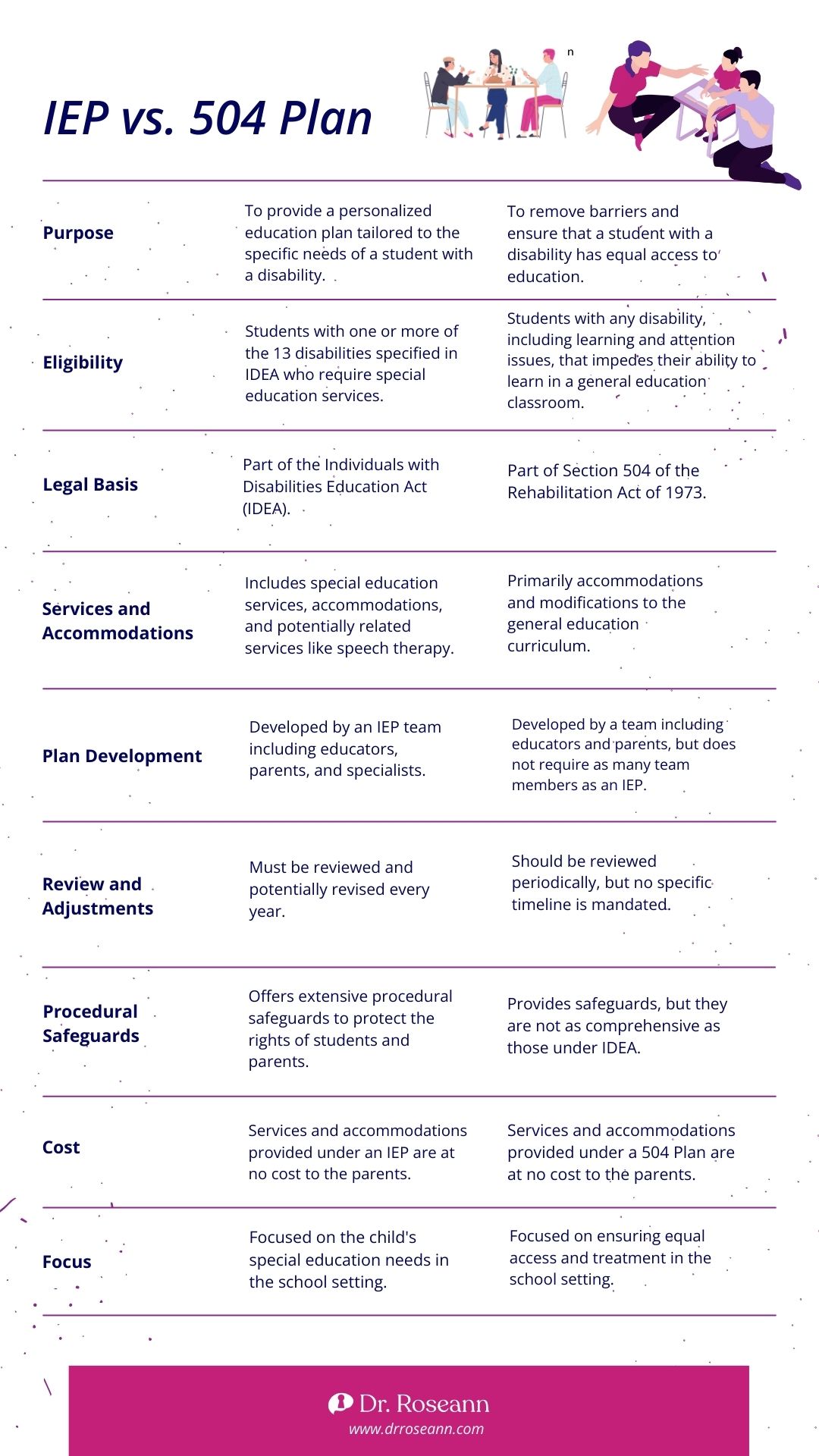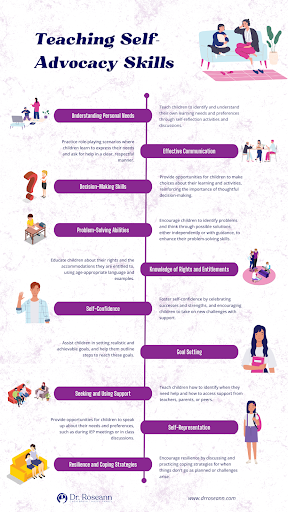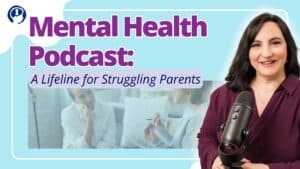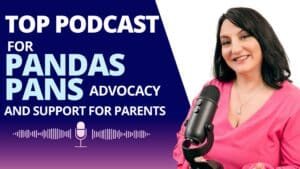Supporting a child with a learning disability involves a combination of understanding, patience, and targeted interventions. Discover effective ways to support children with learning disabilities, from recognizing strengths to finding learning disability resources. Learn how to empower your learning-disabled kids for success.
After three decades of helping students with learning disabilities, I’ve come up with these 10 proven ways to help with learning disabilities in kids:
1. Strive for Early Identification
Early identification is a foundational step in providing effective support for kids with learning disabilities. This process involves a thorough and professional assessment aimed at identifying and understanding learning disabilities.
Utilizing a range of assessments, including cognitive, academic, and behavioral evaluations, allows educators, parents, and specialists to gain a comprehensive understanding of your child’s strengths and challenges.
Early identification not only allows for timely and effective intervention but also fosters a supportive and inclusive learning environment. It enables educators to implement accommodations, modifications, and specialized instruction, creating a foundation for the individual's academic success and personal growth.
2. Work Toward an Individualized Education Plan (IEP) or 504 Plan
In the journey to support your child with learning differences, the creation of an Individualized Education Plan or a 504 Plan is a pivotal step. Collaboration between educators, parents, and specialists is essential to craft a personalized roadmap that addresses the child's unique learning needs.
An IEP is a comprehensive document developed through a collaborative effort. It outlines specific learning objectives, accommodations, and modifications tailored to the child's learning profile.
Through a series of meetings, educators and parents work together to set realistic goals, identify potential challenges, and establish strategies that enhance the child's academic experience. This collaborative approach ensures that the child receives targeted support that aligns with their strengths and challenges (Woods et al., 2023).
Similarly, a 504 Plan provides accommodations and modifications to create an inclusive learning environment. This plan, mandated by Section 504 of the Rehabilitation Act, focuses on removing barriers to learning disabilities in education. It may include adjustments such as extended test-taking time, preferential seating, or assistive technology, which allows your child to participate fully in the educational process.

3. Promote Specialized Instructional Strategies for Students with Learning Disabilities
When teaching disabled learners, specialized instruction emerges as a cornerstone. It tailors the educational experience to cater to each child's distinctive learning style and challenges. The goal is to create an inclusive environment where every child can thrive, irrespective of their unique cognitive profile.
Customizing instruction begins with a profound understanding of the child's learning style and specific challenges. For instance, in the case of dyslexia, a learning disability affecting reading skills. For that reason, employing multisensory approaches becomes paramount.
Such approaches might involve integrating visual, auditory, and tactile elements into lessons to enhance comprehension and retention. Engaging multiple senses allows educators to create a more immersive and effective learning experience, accommodating the diverse needs of learners with exceptionalities.
Specialized instruction goes beyond a one-size-fits-all approach. Recognize that each child's journey is distinct. Educators collaborate with specialists and leverage research-backed strategies to address specific challenges associated with various learning disorders in children.
4. Utilize Assistive Technology
Harnessing the power of assistive technology is a transformative approach to support children with learning differences, as it offers tools that bridge gaps and amplify their learning experiences. Integrating technologies like speech-to-text and audiobooks becomes a key strategy in creating inclusive and accessible educational environments.
Speech-to-Text Technology
Implementing speech-to-text technology allows learning disabled children with challenges in writing or spelling, such as those with dysgraphia, to articulate their thoughts verbally. This innovative tool converts spoken words into written text, providing a more equitable platform for expression.
Audiobooks and Multimedia Resources
For children with difficulties in learning and traditional reading, such as children with dyslexia, integrating audiobooks and multimedia resources into the curriculum can be transformative. Audiobooks offer an alternative way for special needs learners to access information, promoting comprehension and engagement. Combining visual and auditory elements, multimedia resources for learning disabilities create a dynamic learning environment that caters to diverse learning preferences.
The use of assistive technology extends beyond mere accommodation. It cultivates a sense of independence and autonomy in learners with special needs. The integration of assistive technology underscores the commitment to providing an inclusive and empowering educational journey for every child.
5. Create a Structured Environment
Creating a structured and supportive learning environment is paramount in facilitating the academic success of children with learning differences. This approach involves intentional design and organization to minimize distractions and provide clear, consistent instructions which fosters an atmosphere conducive to focused learning.
Minimize Distractions
Designing a learning space that minimizes distractions is crucial for children with attention-related challenges, such as those with ADHD. This involves arranging the physical environment to reduce visual and auditory stimuli that may divert attention. Simple adjustments, such as organizing seating arrangements strategically or using noise-canceling headphones, contribute to a more focused and conducive atmosphere for learning.
Give Clear and Consistent Instructions
Children with learning differences often benefit from clear and consistent instructions. Educators play a pivotal role in straightforwardly providing instructions and breaking down complex tasks into manageable steps. Visual aids, checklists, and verbal reinforcement contribute to reinforcing understanding and promoting a sense of structure, which is particularly beneficial for individuals with learning disabilities like dyslexia or executive functioning challenges.
Establish Routine and Predictability
Establishing routines and predictability within the learning environment provides a sense of security and stability for children with learning differences. Knowing what to expect and having a structured daily schedule helps reduce anxiety and allows a student with learning disability to focus more effectively on their academic tasks.
6. Use Positive Reinforcement
When supporting children with learning differences, positive reinforcement emerges as a powerful tool to cultivate confidence, resilience, and sustained motivation. Recognizing and celebrating achievements, both big and small, play a pivotal role in fostering a positive and inclusive learning environment.
Recognize Effort and Progress
Acknowledging the effort and progress of children with learning differences is essential for building self-esteem. Whether mastering a challenging concept or completing a task independently, providing specific praise and recognition reinforces the value of hard work and perseverance. This positive acknowledgment creates a sense of accomplishment and motivates students to continue putting in effort.
Tailored Feedback and Encouragement
Offering personalized feedback and encouragement is key to addressing individual strengths and challenges. Highlighting specific accomplishments and providing constructive feedback tailored to the child's learning style helps build a supportive rapport between educators, caregivers, and the learner. This approach fosters a growth mindset, which emphasizes that learning is a continuous journey.
Celebrating Achievements
Celebrating achievements, no matter how small, contributes to a positive learning atmosphere. Creating a system of rewards, such as a recognition board or verbal praise, reinforces the idea that success is attainable and worth celebrating. This positive reinforcement not only boosts confidence but also instills a sense of pride and motivation in children with learning differences.
7. Advocate for the Child
Advocating for a child with learning differences is a crucial role that parents, guardians, and educators play in ensuring their educational journey is inclusive, supportive, and aligned with their unique needs. Effective advocacy involves navigating the educational system, understanding the child's rights, and working with special needs children collaboratively to implement necessary accommodations.
Understanding the Child's Rights
A fundamental aspect of advocacy is a comprehensive understanding of the rights afforded to children with learning differences. Familiarity with relevant laws, such as the Individuals with Disabilities Education Act (IDEA) or Section 504 of the Rehabilitation Act, empowers advocates to assert the child's right to a free and appropriate education, accommodations, and a supportive learning environment.
Collaborating with Educators and Specialists
Effective advocacy requires open communication and collaboration with educators, school administrators, and specialists involved in the child's education. By fostering a partnership with the educational team, advocates can ensure that the child's learning needs are accurately assessed, and appropriate accommodations and support services for special needs students are implemented.
Individualized Education Plan Team Meetings
Participating in Individualized Education Plan team meetings is a key aspect of advocacy. These collaborative sessions bring together parents, educators, and specialists to discuss and plan the child's educational program. Advocates can actively contribute by sharing insights into the strengths of students with learning disabilities, proposing specific accommodations, and ensuring that the IEP reflects the child's unique learning profile.
Monitoring Progress and Adjusting Strategies
Advocacy involves continuous monitoring of the child's progress and the effectiveness of implemented strategies. If adjustments are needed, advocates can work with the educational team to modify the IEP or 504 Plan to address evolving needs and challenges better.
8. Get Involved as Parents
Recognizing the pivotal role of parents in a child's educational journey, and involving them in the support process is essential for creating a cohesive and effective learning environment. Maintaining open communication and fostering a collaborative approach between educators and parents contributes significantly to the child's success at school and at home.
Regular Communication Channels
Establishing regular communication channels ensures that parents are consistently informed about their child's academic progress, challenges, and achievements. Regular updates through emails, newsletters, or scheduled parent-teacher conferences create a transparent and supportive relationship between home and school.
Collaborative Goal-Setting
Involving parents in the goal-setting process is integral to creating a shared vision for the child's educational journey. Collaborative discussions about academic objectives, strategies for teaching students with learning disabilities, and expectations for progress contribute to a unified and supportive front that extends from the classroom to the home.
Sharing Strategies for Support
Educators can provide parents with insights into effective strategies and activities for learning disabilities that can be implemented at home to reinforce learning and address specific challenges. This collaborative sharing of resources for students with learning disabilitiesstudent ensures that support for the child is consistent across different environments.
Inclusive Parent-Teacher Meetings
Incorporating parents into the decision-making process, especially during Individualized Education Plan or 504 Plan meetings, ensures that their perspectives and insights are valued. This collaborative approach allows parents to actively contribute to the development and refinement of strategies tailored to their child's unique needs.
Empowering Parents as Advocates
Educators can empower parents by equipping them with information about educational rights, available resources, and effective advocacy strategies. This empowers parents to advocate for their child's needs within the educational system, fostering a sense of shared responsibility for the child's academic success.
9. Provide Social and Emotional Support
Recognizing the profound impact of learning differences on a child's social and emotional well-being is crucial for creating a holistic support system. Learning disabilities can often influence self-esteem and interpersonal relationships; therefore, addressing these aspects becomes an integral part of the child's overall development.
Social Interaction Opportunities
Fostering social interactions is essential for children with learning differences. Educators can create inclusive environments that encourage teamwork, collaboration, and peer support. Group activities for students with learning disabilities, paired learning, and cooperative projects provide opportunities for positive social engagement, helping build student connections and friendships.
Peer Support Programs
Implementing peer support programs for students with learning disabilities can further enhance the social dynamics within the classroom. Pairing students with learning differences with supportive peers can foster a sense of inclusion and acceptance. Doing this not only provides practical assistance but also contributes to a positive social environment where differences are celebrated (Griffin et al., 2016).
Emotional Support Strategies
Learning disabilities can impact a child's emotional well-being. Educators and support staff play a crucial role in providing emotional support by creating a safe space for expression and validation. Incorporate mindfulness activities, counseling services, or designated quiet spaces. This will help kids learn while managing stress and building emotional resilience.
Encouraging Self-Advocacy
Empowering children to advocate for themselves is a key component of social and emotional support. Educators can teach self-advocacy skills, helping children articulate their needs, express emotions, and seek assistance when necessary. This fosters independence and a positive self-image.

Parental Involvement in Emotional Well-Being
Involving parents in discussions about their child's social and emotional well-being creates a collaborative approach. Regular communication about the child's experiences, challenges, and successes ensures that school and home environments are aligned in providing emotional support.
10. Boost On-going Communication
In the collaborative effort to working with kids with disabilities, maintaining open communication is indispensable. Regular and transparent communication between educators, parents, and specialists forms the backbone of a dynamic support system, enabling the continuous monitoring of progress and the flexibility to adjust strategies as needed.
Regular Progress Updates
Frequent updates on the child's academic, social, and emotional progress provide valuable insights into their development. Regular progress reports, parent-teacher conferences, and informal check-ins serve as opportunities to discuss achievements, address concerns, and collectively plan for the child's ongoing success.
Individualized Education Plan Reviews
Scheduled reviews of the Individualized Education Plan or 504 Plan are critical moments for collaborative reflection. These meetings bring together key stakeholders to assess the effectiveness of current strategies, discuss any emerging challenges, and adjust the plan as necessary. This continuous feedback loop ensures that the child's evolving needs are met with appropriate and timely interventions.
Inclusive Team Meetings
Incorporating specialists, such as speech therapists or occupational therapists, into communication channels enhances the multidisciplinary approach to support. Coordinated team meetings provide a comprehensive view of the child's progress, allowing for collaborative decision-making and a unified strategy that addresses various facets of their learning profile.
Two-Way Communication
Encouraging an open and two-way communication channel is vital. Parents and educators should feel comfortable sharing observations, insights, and any concerns they may have about the child's development. This collaborative exchange of information ensures a holistic understanding of the child's experiences at school and at home.
Flexibility and Adaptability
Ongoing communication facilitates the flexibility and adaptability of support strategies. By staying informed about the child's responses to interventions, educators and parents can collaboratively adjust teaching strategies for LD students. They can also provide accommodations and emotional support to better align with the child's current needs.
Can a learning disability be cured?
Severe learning disabilities cannot be cured, as they are lifelong neurological conditions affecting information processing. However, with early detection and appropriate interventions, individuals can develop effective strategies to navigate challenges.
How to overcome learning disabilities?
Overcoming educational disabilities involves implementing strategies and interventions tailored to an individual's specific challenges. This may include specialized education, targeted interventions, and accommodations.
How to deal with special needs children?
To effectively deal with special need kids, seek professional guidance from educators and healthcare providers to understand the child's specific needs. Help for a special child also involve creating a supportive environment by implementing individualized education plans, setting realistic expectations, and fostering independence.
How to help a child with cognitive impairment?
To assist a child with learning impairments, obtain a professional assessment to understand the specific challenges and tailor interventions accordingly. Collaborate with educators to develop an IEP that addresses the child's unique needs, creating a structured and consistent environment at home and school.
How to get your child extra help in school?
To address general learning difficulties in the classroom, initiate open communication with teachers, attend meetings to discuss concerns, and explore available resources such as learning disabilities programs or tutoring services. Actively participate in your child's academic journey, monitor progress, and advocate for the necessary support to ensure a positive and supportive learning environment.
How to help students with learning disabilities in the classroom?
Working with students with disabilities in the classroom involves developing and implementing differentiated instruction, flexible seating arrangements, and the use of assistive technology to accommodate diverse learning styles and abilities, among others.
Does my special needs child have to go to schools for disabled students?
In most places, education is compulsory for all children, especially kids with special needs, but accommodations and provisions are typically made to meet the unique requirements of such students even in regular schools.
What does learning differences mean?
Learning differences is a term used to describe variations in the way individuals acquire, process, and demonstrate knowledge. It recognizes that people have diverse learning styles, strengths, and challenges.
What are the top 5 learning disabilities in children?
The top 5 childhood learning disabilities include dyslexia, which affects reading, spelling, and writing; dyscalculia, related to difficulties in mathematical abilities. Dysgraphia, affecting writing skills, and auditory processing disorder (APD), impacting the processing of auditory information, are also common learning differences.
How to explain special needs to a child?
Teaching kids about disabilities requires the use of simple language. Emphasize that everyone is unique with their own strengths and challenges. Encourage questions, promote empathy, and highlight the positive aspects of differences.
Does my son have a learning disability?
If you have concerns about your son's learning or development, it's advisable to consult with professionals such as educators, psychologists, or pediatricians. They can conduct assessments, evaluate your son's academic and developmental progress, and provide insights into whether he may have a learning disability or any other challenges that require attention.
How to work with special needs students?
When working with special needs students, prioritize understanding their individual needs, strengths, and challenges through collaboration with educators, specialists, and parents. Implement differentiated instruction and accommodations to tailor the learning experience to each student's requirements, fostering a supportive and inclusive classroom environment.
What are two options for identifying students with learning disabilities?
Two options for identifying students with learning disabilities include conducting comprehensive psychoeducational assessments, which involve evaluating cognitive abilities, academic skills, and emotional factors, and using ongoing progress monitoring to identify students who may struggle with learning and may require additional support or interventions.
How to explain disability to a child?
To explain disability to a child, use simple language and emphasize that everyone is unique, with some people having differences or challenges that others may not have. Encourage empathy, understanding, and the importance of treating everyone with kindness and respect regardless of their abilities.
Do learning disabilities go away?
Learning disabilities are typically lifelong conditions, and they do not go away. However, with appropriate support, interventions, and accommodations, individuals with learning disabilities can develop effective strategies to manage their challenges and succeed academically and personally.
Can learning disabilities be cured?
Learning disabilities cannot be cured, as they are typically lifelong neurological conditions. However, individuals can receive learning disabilities treatment through support and interventions to develop effective strategies that help them navigate and succeed despite their challenges.
What type of disability affects how a person understands words?
A disability that affects how a person understands words is often associated with language processing difficulties, and it can be part of conditions such as Specific Language Impairment (SLI) or Auditory Processing Disorder (APD). Dyslexia, a learning disability that primarily impacts reading and spelling, may also involve challenges in processing and understanding written words.
Can my child get disability for ADHD?
Children with ADHD may qualify for educational support and accommodations through processes like an IEP or a 504 Plan, depending on the impact of ADHD symptoms on their learning. Eligibility is determined through assessments, collaboration with parents and teachers, and consideration of the child's individual needs.
How to teach students with learning disabilities?
Teaching students with learning disabilities involves understanding individual needs, implementing differentiated instruction, and creating a supportive classroom environment. Utilizing assistive technology, providing regular feedback, and breaking tasks into manageable chunks are crucial strategies.
How does my child learn best?
Identifying how your child learns best involves observing their learning disability behaviors, preferences, and responses to various learning experiences. Pay to whether they excel in visual, auditory, or hands-on activities, and consider their preferred learning environment and pace.
How to discipline a child with intellectual disability?
Disciplining a child with an intellectual disability involves establishing clear and consistent expectations, using positive words for special needs kids, and maintaining a structured routine to provide a sense of security. Use simple language, visual supports, and immediate feedback to guide behavior, while also redirecting actions towards more acceptable choices.
How to help a child with writing difficulties?
To provide learning disability help to a child with writing difficulties, provide tools and strategies such as graphic organizers or speech-to-text software to support the planning and organization of their thoughts. Additionally, encourage regular practice through short, focused writing sessions and offer constructive feedback to build their confidence and skills over time.
What are the signs of a learning disability in a teenager?
The signs of a learning disability in a teenager may include persistent struggles with reading, writing, or math, despite effort and instruction, as well as difficulties with organization, time management, and completing assignments. Behavioral indicators may include a sudden decline in academic performance, frustration, avoidance of certain tasks, or low self-esteem related to school activities.
What are the signs of learning disability in 5 year-old kids?
Signs of a learning disability in a 5-year-old may include delayed speech and language development, problems with letter recognition, and challenges with fine motor skills such as holding a pencil or scissors. Persistent difficulties in recognizing colors, shapes, or difficulty following simple instructions may also be indicators of a potential learning disability.
How help for adults with learning difficulties?
To provide help for adults with mild learning difficulties, offer tailored support and accommodations in workplace settings, such as providing clear instructions, utilizing assistive technologies, and fostering a supportive work environment. Undiagnosed learning disabilities in adults can present challenges in various aspects of life, including education, employment, and daily activities.
How to overcome learning disabilities in adults?
Overcoming learning disabilities in adults involves obtaining a professional assessment to identify specific challenges, creating an individualized learning plan with accommodations, and enrolling in skill development programs. While there is no treatment for learning disabilities, you can utilize assistive technologies, build a supportive network, and develop self-advocacy skills to navigate various settings effectively.
Citations
Griffin, M. M., Wendel, K. F., Day, T. L., & McMillan, E. D. (2016). Developing Peer Supports for College Students with Intellectual and Developmental Disabilities. Journal of Postsecondary Education and Disability, 29(3), 263–269. https://eric.ed.gov/?id=EJ1123801
Woods, A. D., Morgan, P. L., Wang, Y., Farkas, G., & Hillemeier, M. M. (2023). Effects of Having an IEP on the Reading Achievement of Students With Learning Disabilities and Speech or Language Impairments. Learning Disability Quarterly, 073194872311542. https://doi.org/10.1177/07319487231154235
Dr. Roseann is a mental health expert in Learning Disability who frequently is in the media:
- Brentwood Home Dos & Don'ts for Creating a Child's Workstation at Home
- Business Insider Your kids could get the coronavirus when they go back to school. These are the risks and benefits to weigh before sending them.
CBS (Video) Learning From Home During Quarantine
Always remember… “Calm Brain, Happy Family™”
Disclaimer: This article is not intended to give health advice and it is recommended to consult with a physician before beginning any new wellness regime. *The effectiveness of diagnosis and treatment vary by patient and condition. Dr. Roseann Capanna-Hodge, LLC does not guarantee certain results.
Are you looking for SOLUTIONS for your struggling child or teen?
Dr. Roseann and her team are all about science-backed solutions, so you are in the right place!
Grab your complimentary copy of
147 Therapist-Endorsed Self-Regulation Strategies for Children: A Practical Guide for Parents
Dr. Roseann is a Children’s Mental Health Expert and Licensed Therapist who has been featured in/on hundreds of media outlets including The Mel Robbins Show, CBS, NBC, PIX11 NYC, Today, FORBES, CNN, The New York Times, The Washington Post, Business Insider, Women’s Day, Healthline, CNET, Parade Magazine and PARENTS. FORBES called her, “A thought leader in children’s mental health.”

She coined the terms, “Re-entry panic syndrome” and “eco-anxiety” and is a frequent contributor to media on mental health.
Dr. Roseann Capanna-Hodge has three decades of experience in working with children, teens and their families with attention-deficit hyperactivity disorder (ADHD), autism, concussion, dyslexia and learning disability, anxiety, Obsessive Compulsive Disorder (OCD), depression and mood disorder, Lyme Disease, and PANS/PANDAS using science-backed natural mental health solutions such as supplements, magnesium, nutrition, QEEG Brain maps, neurofeedback, PEMF, psychotherapy and other non-medication approaches.
She is the author of three bestselling books, It’s Gonna Be OK!: Proven Ways to Improve Your Child's Mental Health, The Teletherapy Toolkit, and Brain Under Attack. Dr. Roseann is known for offering a message of hope through science-endorsed methods that promote a calm brain.
Her trademarked BrainBehaviorResetⓇ Program and It’s Gonna be OK!Ⓡ Podcast has been a cornerstone for thousands of parents facing mental health, behavioral or neurodevelopmental challenges.
She is the founder and director of The Global Institute of Children’s Mental Health, Neurotastic™Brain Formulas and Dr. Roseann Capanna-Hodge, LLC. Dr. Roseann is a Board Certified Neurofeedback (BCN) Practitioner, a Board Member of the Northeast Region Biofeedback Society (NRBS), Certified Integrative Mental Health Professional (CIMHP) and an Amen Clinic Certified Brain Health Coach. She is also a member of The International Lyme Disease and Associated Disease Society (ILADS), The American Psychological Association (APA), Anxiety and Depression Association of America (ADAA) National Association of School Psychologists (NASP), International OCD Foundation (IOCDF).
© Roseann-Capanna-Hodge, LLC 2024










